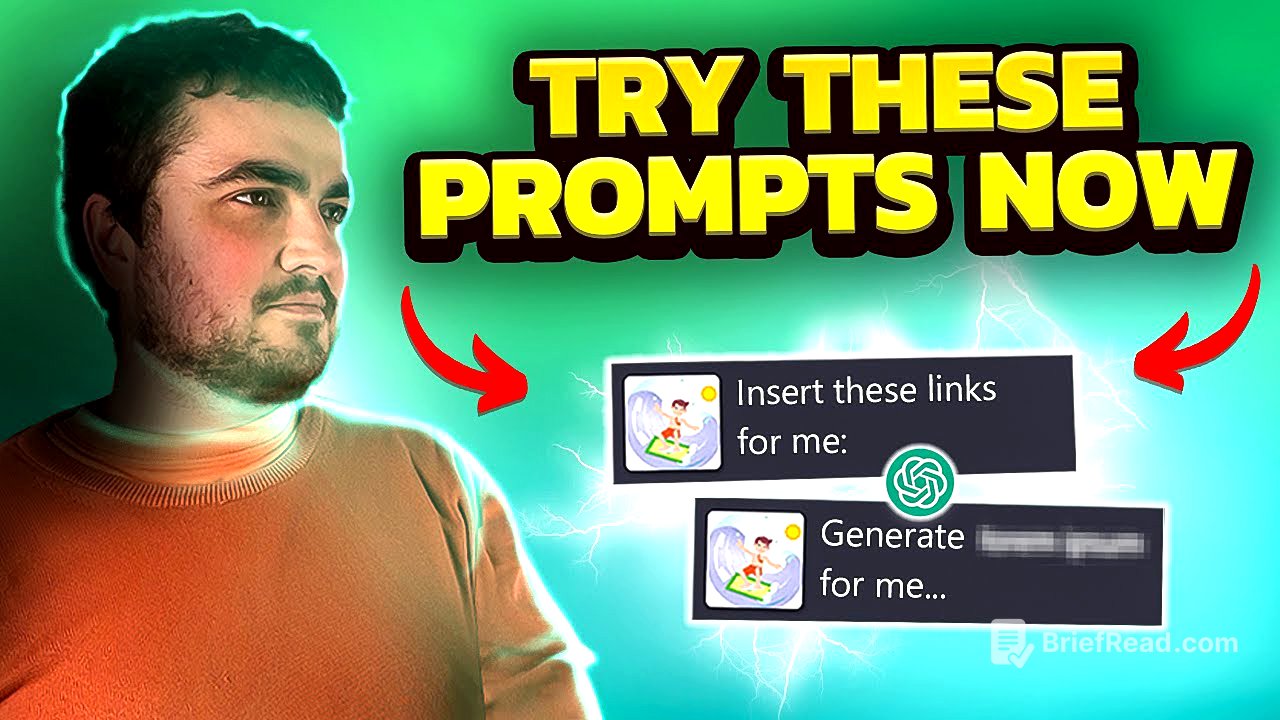TLDR;
This video provides two ChatGPT prompts designed to enhance SEO efforts. The first prompt focuses on generating content with contextualized internal links, saving time and improving content creation efficiency. The second prompt details how to create glossary pages in bulk, which can boost website SEO by increasing content volume and internal linking.
- First prompt generates content with contextualized internal links.
- Second prompt creates glossary pages in bulk to boost website SEO.
ChatGPT for SEO [0:00]
The video introduces two ChatGPT prompts that are designed to improve SEO. The presenter encourages viewers to follow along using an article in the description, which details the processes being demonstrated. The focus is on practical applications of ChatGPT to streamline content creation and internal linking strategies.
First Prompt ChatGPT content with contextualized internal links already inside [0:35]
The first prompt is designed to create content with internal links already embedded. The prompt instructs ChatGPT to write a blog post and include internal links using markdown hyperlinks with keyword-rich anchor text. The presenter emphasizes the importance of providing detailed information about the brands or topics to ChatGPT to get high-quality output. An example prompt includes details about specific brands, such as kiton, Cesare Attolini and boss, including information about their products and materials. The presenter demonstrates how to refine the output by instructing ChatGPT to use markdown formatting and correcting any inconsistencies in the generated links. The presenter highlights the time-saving aspect of this method, as the generated content can be directly copied into platforms like Shopify with the internal links intact.
Bonus tip - Correcting ChatGPT [3:04]
The presenter shares a bonus tip for refining ChatGPT's output. If the initial output does not meet the desired specifications, such as using markdown formatting, the generation can be stopped, and ChatGPT can be instructed to correct the issue. This iterative process helps in achieving the desired content format and structure.
Example article from TODAY [5:18]
The presenter showcases a real-world example of an article created using the demonstrated ChatGPT prompt. The article, titled "Italian White Sneaker Brands," was written and published the same day and quickly ranked on the first page of Google search results. This example illustrates the effectiveness of the prompt in generating SEO-friendly content that can achieve rapid ranking.
Second Prompt [6:36]
The second prompt focuses on creating glossary pages in bulk to enhance website SEO. The presenter explains that these pages are designed to add quick content and internal links to the website. The prompt instructs ChatGPT to create a table with columns for handle (URL slug), title, body HTML, title tag for Google, and meta description for Google. The body content should be written in HTML with paragraph tags. The presenter demonstrates how to correct ChatGPT if it makes mistakes, such as adding HTML tags to the title or omitting them from the body. The generated table can then be imported into Shopify using a tool called Matrixify, which allows for the bulk upload of pages. The presenter briefly shows how to use a template in Google Sheets to format the data before importing it into Shopify, emphasizing that this method increases overall SEO by adding more content and internal links to the website.









